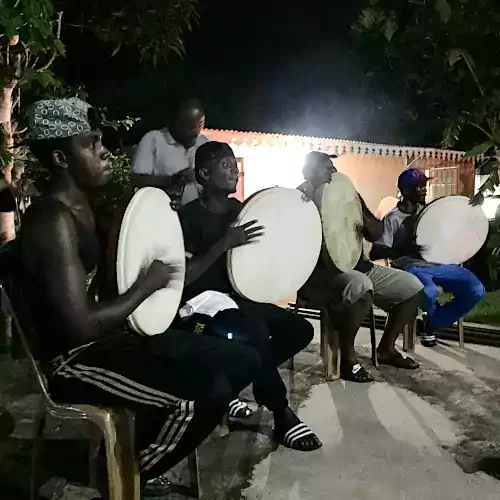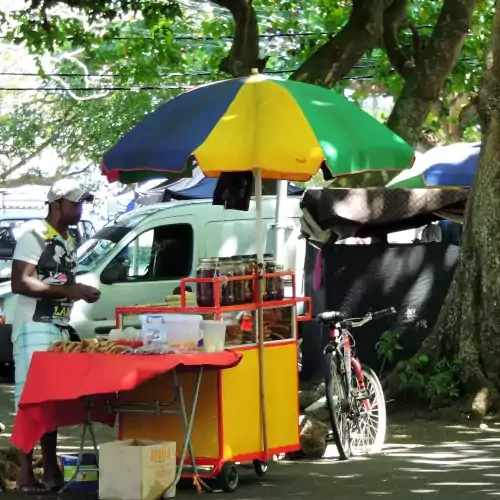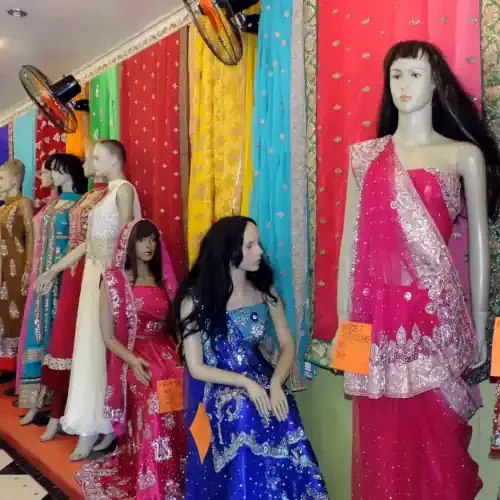Fascinating Port Louis
Despite its small size, relative importance and short 300-year history, Port Louis has a lot to tell.
Port-Louis is a fascinating place to discover for it is a concentrate of all the facets of Mauritius, all the cultures from the different origins of its population and the fast evolution of those over 3 centuries.
Being mainly a business town, it is quiet as from 7.00 pm but during day time it is fairly animated while the island-style indolence pervades at any time.
Port-Louis is a place of contrasts and contradictions, a place some love and others hate, charming but hard at times. It all depends on each one’s situation, experience and way it is being visited.












good to know
- it is pleasant to visit in winter or on cooler days, really uncomfortable on hot days.
- it is safe to walk around its streets in day-time as long as the dress code is respected and your belongings closely monitored.
to do in port Louis
Port-Louis is the ideal place to learn and experience the locals’ real daily lives and great to discover the history of the island. The better means for this is to use our itinerary route, made available to our guests. The main stops are as follows:
- Visiting the Aapravasi Ghat and its new museum is a good start as located among the oldest buildings of Port-Louis and offers thorough insight about the second part of the history of Mauritius.
- Wandering around the Eastern part of the centre, namely switching from the Muslim quarters to China Town, where pork sausages are put to dry on balconies.
- Hop at the Bazaar for a quick look and tasting some local food.
- Visit the Photography museum, more for the old pictures than the cameras. (Ask to see the pictures kept in drawers).
- Eat in a traditional Chinese restaurant.
to see in port Louis
- The myriads of shops stuffed with the most varied merchandise and goods, often hanging from the ceiling.
- The old typical Creole houses, of which very few are left. Same for the better-maintained colonial buildings such as the Poncini shop.
- The central region including the Place d’Armes the theatre place and the narrow paved roads around.
pay attention to:
- The energy with which the street-hawkers and other self-employed people fight their day through.
- The different neighbourhoods are samples of different countries. Time also seem to differ from one place or person to another. Businessmen in a hurry drive their luxury cars past people carrying out jobs typical of past times.
brief history of port louis
Coveted by all navies for its strategic location along the route to the East, Mauritius had seen sailors calling several centuries before the first settlements. It was said to be covered of giant tortoises, an already extinct species when the French disembarked in the South-East in 1721.
The first permanent settlement in Port-Louis started in 1735 with governor Mahé de Labourdonnais, for the account of the French East India Company.
The first objectives were to provide a point of call to French vessels, safe from storms and safe from enemy ships, where the boats could be repaired and refilled, the crew put to some rest and cured.
Under the French rules Port-Louis had very hard times and some good periods, especially under Louis XVI rule. General Suffren, in a letter to his wife wrote: “…this country softens, there are plenty of beautiful women and a most pleasant way of life…”
After the French revolution a different class of French immigrated to exploit the lands or the commercial opportunities the port was offering.
Find Villas
good to know
- it is pleasant to visit in winter or on cooler days, really uncomfortable on hot days.
it is safe to walk around its streets in day-time as long as the dress code is respected and your belongings closely monitored.
to do in port Louis
Port-Louis is the ideal place to learn and experience the locals’ real daily lives and great to discover the history of the island. The better means for this is to use our itinerary route, made available to our guests. The main stops are as follows:
- Visiting the Aapravasi Ghat and its new museum is a good start as located among the oldest buildings of Port-Louis and offers thorough insight about the second part of the history of Mauritius.
- Wandering around the Eastern part of the centre, namely switching from the Muslim quarters to China Town, where pork sausages are put to dry on balconies.
- Hop at the Bazaar for a quick look and tasting some local food.
- Visit the Photography museum, more for the old pictures than the cameras. (Ask to see the pictures kept in drawers).
- Eat in a traditional Chinese restaurant.
to see in port Louis
- The myriads of shops stuffed with the most varied merchandise and goods, often hanging from the ceiling.
- The old typical Creole houses, of which very few are left. Same for the better-maintained colonial buildings such as the Poncini shop and the Supreme court.
- The central region including the Place d’Armes the theatre place and the narrow paved roads around.
pay attention to:
- The energy with which the street-hawkers and other self-employed people fight their day through.
- The different neighbourhoods are samples of different countries. Time also seem to differ from one place or person to another. Businessmen in a hurry drive their luxury cars past people carrying out jobs typical of past times.
Find Villas











